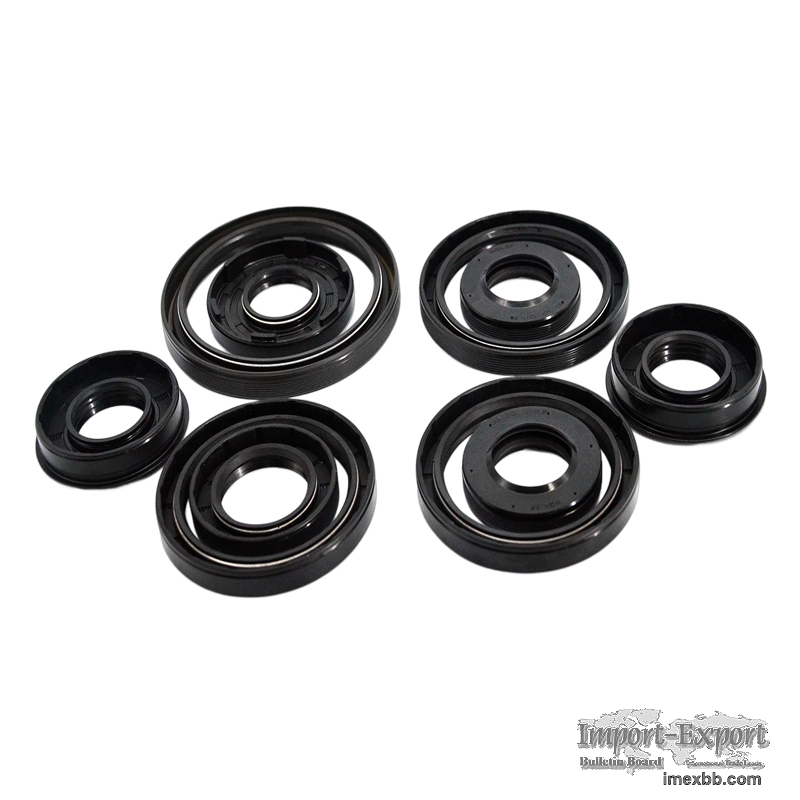 |
 |
Home > Offers to Sell > Others & Excess Inventory > Others
| Contact: | junyingliu |
|---|---|
| Company: | Xingtai Shanfeng special rubber products Co., Ltd |
| Hetou Industrial Zone, Renze District, Xingtai City, Hebei Province | |
| Xingtai City, Hebei | |
| China | |
| Phone: | 18713908608 |
| E-Mail: | |
| Date/Time: | 9/6/23 3:31 GMT |
NQKSF High Quality Oil Seal Famous Brand FPM FKM TC TG Oil Seal
Oil seals are essential components in various mechanical systems, including
engines and industrial machinery, as they prevent the leakage of lubricants and
contaminants. Among the different types of oil seals available, TC and TG seals
are commonly used. In this article, we will discuss the differences between TC
and TG oil seals, helping you understand their unique characteristics and
applications.
1. Design and Construction:
The primary difference between TC and TG oil seals lies in their design and
construction. TC seals, also known as double-lip seals, consist of two sealing
lips - an inner lip and an outer lip. The inner lip is responsible for
retaining the lubricant, while the outer lip acts as a dust and dirt exclusion
barrier. On the other hand, TG seals, also referred to as single-lip seals,
feature a single sealing lip that performs both the sealing and exclusion
functions.
2. Sealing Efficiency:
When it comes to sealing efficiency, TC seals are generally considered to
be more effective. The presence of two sealing lips in TC seals provides an
additional layer of protection against oil leakage. The inner lip ensures a
tight seal around the rotating shaft, while the outer lip prevents the entry of
contaminants. In contrast, TG seals rely on a single sealing lip to perform
both functions, which may result in slightly lower sealing efficiency compared
to TC seals.
3. Installation and Maintenance:
In terms of installation and maintenance, TG seals offer certain
advantages. Due to their simpler design with a single sealing lip, TG seals are
easier to install and require less space compared to TC seals. Additionally, TG
seals are generally more forgiving in terms of shaft misalignment, making them
suitable for applications where alignment may be a concern. Maintenance-wise,
both TC and TG seals require periodic inspection and replacement to ensure
optimal performance.
4. Applications:
TC and TG seals find applications in different industries and machinery. TC
seals are commonly used in automotive engines, hydraulic systems, and
industrial equipment where high sealing efficiency is required. Their dual lip
design provides better protection against oil leakage, making them suitable for
applications with high-speed rotating shafts. TG seals, on the other hand, are
often used in lower-speed applications, such as pumps, gearboxes, and
agricultural machinery. Their simpler design and ease of installation make them
a cost-effective choice for various industrial applications.
5. Cost:
When it comes to cost, TG seals are generally more economical compared to
TC seals. The simpler design of TG seals requires fewer materials and
manufacturing processes, resulting in a lower price point. This makes TG seals
a preferred choice for applications where cost is a significant consideration
without compromising the necessary sealing requirements.
TC and TG oil seals differ in terms of design, sealing efficiency,
installation, applications, and cost. While TC seals offer higher sealing
efficiency with their dual lip design, TG seals provide ease of installation
and cost-effectiveness. Understanding the differences between these two types
of oil seals will help you make an informed decision when selecting the
appropriate seal for your specific application.
Minimum Order: 100 pieces
SOURCE: Import-Export Bulletin Board (https://www.imexbb.com/)
Similar Products:Not exactly what you are looking for? Post an Offer to Buy!
![]()
© 1996-2010 IMEXBB.com. All rights reserved.
|
|
|






